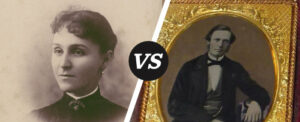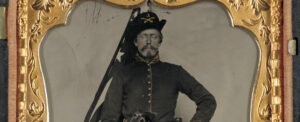One of the strangest hallmarks of old photos is the fact that the people in them hardly ever smile.
To our modern sensibilities, it seems only natural to smile when someone points a camera at us. So why did people of old look so miserable?
I wanted to get to the bottom of it and investigate why nobody smiles in old photographs. I’m pleased to say the results are in but the reasons are weirder than I imagined!
Check out these nine bizarre reasons I found that may explain why nobody smiles in old photos.
1. Peoples teeth weren’t as nice
One big reason why people avoided smiling in old photos is that people’s teeth weren’t as nice as they are now.
Dental care during the Victorian age was both pricey and rudimentary. And due to a lack of understanding and modest equipment, peoples oral hygiene was poor.
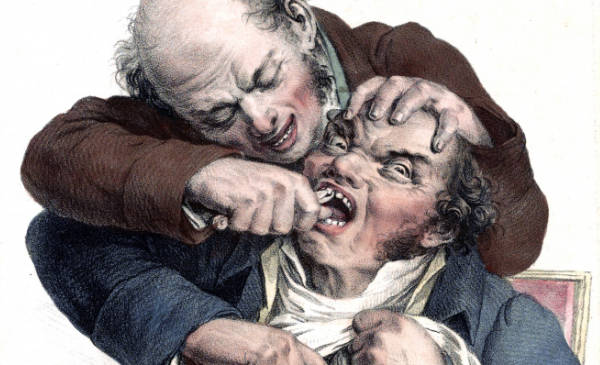
Sugar also became more accessible during this era, which significantly contributed to a rise in cavities. So people’s teeth were not only less aesthetically pleasing, but also caused them a great deal of pain.
It’s no wonder people avoided smiling in old photos!
Did you know? If you had a rotten tooth, you’d have to go through a painful and costly extraction. This was generally performed using pliers or forceps by a local blacksmith or barber – with no anesthetic!
2. There wasn’t as much to smile about
Compared to the early days of photography, we are in a time of peace. In those times, war and poverty were a common occurrence.
While photography was still in it’s infancy, it became an integral part of war-time reporting such as World Wars I and II in the early 20th century, and the Great Depression also coinciding with the relatively early period of photography.
Empire building and the consequent wars were part of people’s reality. (Read our article on The History of Photography).
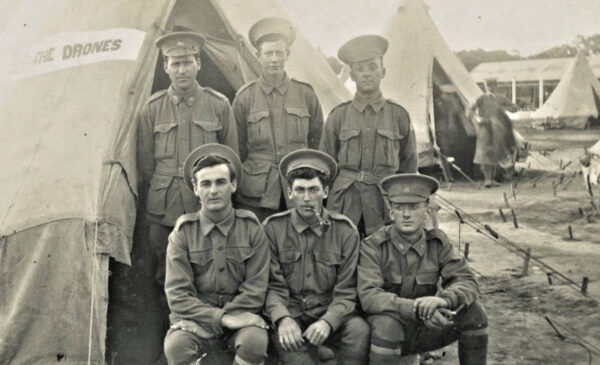
Furthermore, living conditions were much worse than they are now. Families were often large and cramped, diseases were rampant and there wasn’t nearly as much food to go around.
Thus, it’s unsurprising that people back then looked serious in old photographs. It was simply harder to survive, let alone thrive.
3. Smiling was less culturally appropriate
Not many people realize this, but smiling was actually less culturally appropriate back in the late 19th and early 20th centuries. It had yet to become something that people did to each other constantly like we do today. [1]
Smiling at someone was considered a sign of respect and appreciation and in some case a gesture of submission. To smile at a complete stranger would be seen as odd and even forward.
So unless you felt those things for the photographer, it made more sense to keep a straight face!
Did you know? In the Victorian era, it was considered unseemly for women to smile in public. It was seen as a way of drawing attention to themselves and thus considered to be immodest.
4. Photographic portraits were based on paintings
When photography was first invented, the people who pioneered were heavily influenced by historical painted portraiture. [2]
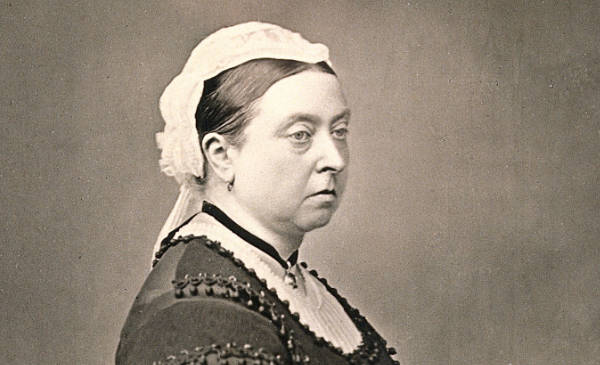
Up until that point, it had been the only means of recording the likeness of a person.
But in paintings, the people who were being depicted almost always had serious expressions on their face. This is because painted portraits were often commissioned by the wealthy to commemorate a momentous occasion, such as a death in the family or a grand victory.
They were a representation of someone, a person, a family, a social status, all recorded for posterity.
Therefore, it was a natural extension for early photographers to emulate that style in their photographic portraits.
5. Long exposure times made it hard to capture smiles
The cameras that were first used to take portraits of people took a very long time to expose the photograph. It could take several minutes to take a photograph.
Such long exposure times required subjects to sit very still. Even small movements could cause the photograph to turn out blurry.
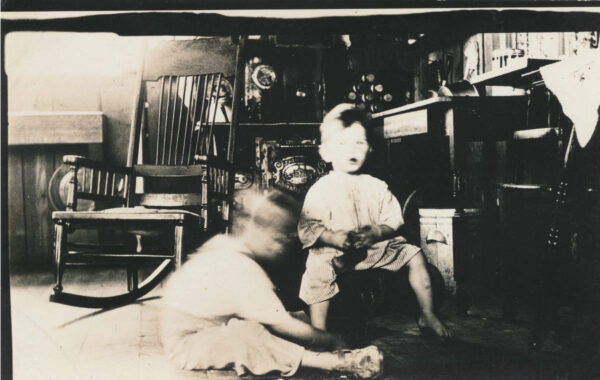
It’s not easy holding the same pose for several minutes and is precisely why many photographs from long ago show some people, especially their arms and faces, appearing blurred.
Smiling would have only made the person’s face move even more and resulted in an even blurrier photograph.
Can you imagine if we had to hold the same wide-grinned expressions for several minutes to take our selfies? Nor can I – no wonder they didn’t smile!
6. Smiling was a sign of madness
In today’s world, particularly in the West, smiling is a way to show friendliness as well as joy. However, in the days of the first photographs, people actually considered smiling excessively and smiling big to be a sign that you had a few screws loose.
Did you know? Some people believed that smiling showed that you were not in control of your emotions and were unstable. Victorian psychiatrists even used to diagnose their patients with “smiling mania”!
So combined with the long exposure times, people would have probably thought you to be mad if you would have sat down in front of an old camera for several minutes with a huge smile spread across your face!
This is one of the reasons why people did not often smile in old photos, especially not wide and with teeth.
7. They were not living…
It’s hard to believe, but some people in old photographs are not actually living! This type of photography was called a “memento mori”, which is Latin for “remember that you will die”.
Post-mortem photography was popular in the 1800s and early 1900s, when it was common for people to die from diseases such as tuberculosis.
It was considered to be a way to remember the loved ones who had passed away.
In some of these photographs, the people who were still alive would often pose with the dead person in the photograph.
Warning: The below photograph contains imagery that some viewers may find distressing.

8. People were unsure of photography
While it may be natural for humans to smile, it isn’t particularly natural to smile in front of a strange machine that takes your picture, at least not in the early days of photography.
People back in the day did not yet know much about the process of photography. They simply sat themselves in front of a strange contraption that somehow made their image appear on a glass plate. They did not often understand what was occurring as part of this process except that it was prolonged and very expensive!
It wasn’t until the invention of the Kodak Brownie camera and its use by everyday people in the early 20th century that smiles became more commonplace.
Did you know? The Kodak Brownie camera, introduced in 1900, cost just $1 (about $30 today) and became one of the best-selling cameras of all time!
The significant reduction in the cost of cameras meant they could be used by many people for the documentation of their everyday lives.
Consequently, people were more relaxed in front of them and reduced exposure times meant the cameras themselves were able to capture more candid shots of personal moments, smiles and joy.
Read our article on the History of Photography to learn more about the Kodak Brownie camera.
9. Smiling was not encouraged
It can come as a surprise that people were actually encouraged to keep a straight face during the process of photography, most likely because the photographer was trying to avoid blurry photographs, mentioned earlier in the article.
In fact, rather than having people who were posing say the now-commonly spoken phrase of “cheese!” (which encourages a wide-mouth grin like Wallace from Wallace and Gromit) they were often told to say “prunes!” to promote a photo featuring a relaxed, straight face with no smile included.
Furthermore, photography was extremely expensive.
Families may only be able to afford one photograph which would be used not only as a record of themselves and their family but as a representation of their wealth and status which was recorded for posterity.
The opinion of the time can conceivable be summed up by Mark Twain:
"A photograph is a most important document, and there is nothing more damning to go down to posterity than a silly, foolish smile caught and fixed forever."
Conclusion
It’s commonly thought that the only reason people in old photographs didn’t smile was because the procedure took so long.
However, as you can see, there are several reasons that contributed to the absence of smiles in old photos:
- Peoples teeth weren’t as nice
- There wasn’t as much to smile about
- Smiling was less culturally appropriate
- Photographic portraits were based on paintings
- Long exposure times made it hard to capture smiles
- Smiling was a sign of madness
- They were not living...
- People were unsure of photography
- Smiling was not encouraged
So the next time you come across an old photograph, don’t assume that the people in it were simply miserable – there are a variety of reasons why they may not have been smiling!
For me, this is why old photographs are so fascinating to look at because they offer a glimpse into a period of history when life was very different from today.

